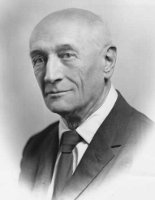 To Curt John Ducasse
To Curt John Ducasse
C/o Brown Shipley & Co 123 Pall Mall, London, S.W.1
Cortina d’Ampezzo, Italy. June 28, 1924
If “real” is a eulogistic term relative to private interests, it should be left (shouldn’t it?) to the tender mercies of poets and newspapers, and when we use it in our speculations it should be in our concomitant capacity of human babblers, without giving it any importance, except rhetorically.
As you probably know, or will when you read my first chapter of “Realms of Being” in the “Journal”, I am in the habit of using the word “existence” instead of “reality” (because the “non-existent” is not indifferent to me) for a presumptive sphere, defined by me as that in which beings have external and variable relations, or in other words, as contingent and in flux. Being defined in this way, the existent is or includes all that is dynamic, and therefore all that interests practical people in their transitive thoughts; and it includes all action, movement, and conduct. It might be called Americanly real. But (as you show) it need not be real for the oyster, the poet, or the mystic. Now, is it or is it not incompatible with “Ontological Liberalism” to confine the word “existence” to this dynamic realm, to nature? Is this contrary to good English usage? And if so, is not some name of the kind to be given to a sphere which, in one sense, forces the recognition of its emphatic reality and arbitrary limits upon everybody, since it conditions the existence even of his most rapt contemplation or most passive pleasures?
From The Letters of George Santayana: Book Three, 1921-1927. Cambridge, MA: The MIT Press, 2002.
Location of manuscript: The John Hay Library, Brown University, Providence RI
